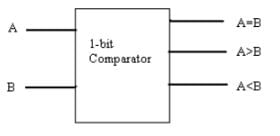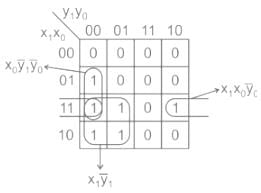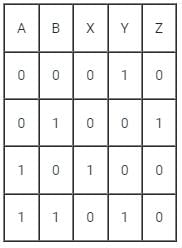Test: Comparators - Electrical Engineering (EE) MCQ
10 Questions MCQ Test - Test: Comparators
A digital circuit which compares two numbers A3 A2 A1 A0, B3 B2 B1 B0 is shown in figure. To get output Y = 1, the correct pair of input numbers are


X = X1X0 and Y = Y1Y0 are 2-bit binary numbers. The Boolean function S that satisfies the condition “If X > Y, then S = 1”, in its minimized form, is
Maximum conversion time in clock cycles for three types of 8 bit ADCs (i) Successive approximation, (ii) Dual slope and (iii) Parallel comparator are respectively
Circuit for comparing 2 n-bit numbers has ____ entries in truth table
The output Y of a 2-bit comparator is logic 1 whenever the 2-bit input A is greater than the 2-bit input B. The number of combinations for which the output is logic 1, is
A 3 bit comparator circuit gives logic 1 output whenever the 3 bit input A is greater than the 3 bit input B. The output Boolean function y is represented by a K-map. The no. of 1 in the K-map is –


































